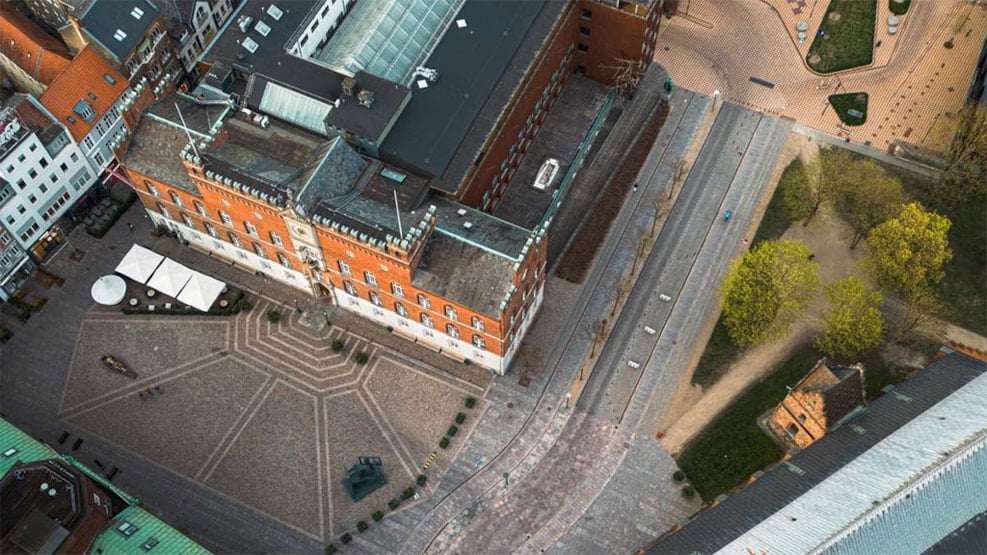
Odense City Hall
The History of Odense City Hall
Odense City Hall, situated right in the heart of Odense's vibrant center, has housed the city's administrative and political center since its construction from 1881 to 1883. The new building replaced the old town hall which dated back to 1480. Through the centuries, Odense City Hall has witnessed many of the city's important historical events and has played a central role in the local community.
Today, Odense City Hall still serves as a vital administrative hub. It houses the mayor's office, the city council chamber where the city council meets, and various municipal offices. Besides serving as a workplace for municipal employees, City Hall is also a popular venue for weddings and other ceremonial events. Its historical charm and central location make it an attractive place for locals and visitors alike.
The Architecture
Odense City Hall was designed by architects J.D. Herholdt and Carl Lendorf and is an outstanding example of the Italian Gothic architectural style that was popular in the late 19th century. A newer extension, designed by Helweg-Møller, was inaugurated in 1955 in order to adress a growing need for more space. The building contains countless architectural details designed by Helweg-Møller, ranging from fittings, door hinges, and handles to lamps and railings with a structure inspired by the ribbed stems of the bear's claw plant.
Inspiring Art
A visit to Odense City Hall also offers a great art experience. In the City Hall main hall, the artist Yan's work Fynsk Forår (Spring on Funen) adorns an entire end wall. Throughout the building, paintings, sculptures, and reliefs by renowned artists such as Keld Moseholm and Kurt Trampedach enrich your visit.
Did you know that:
You can still see a bullet hole in the city coat of arms (located above the main entrance) from a German attack during World War II?